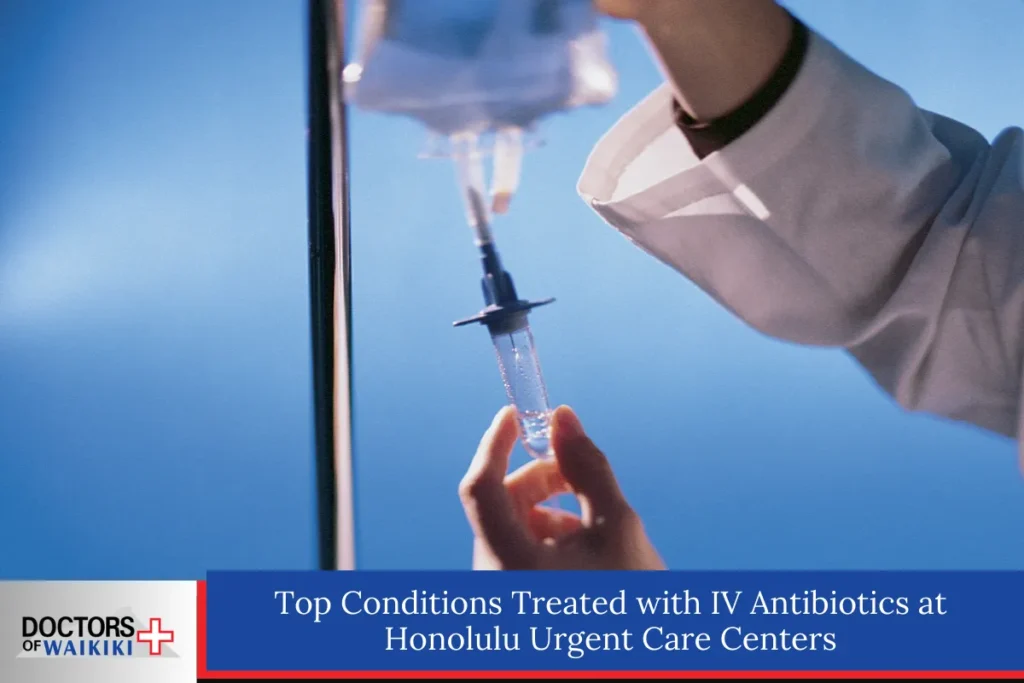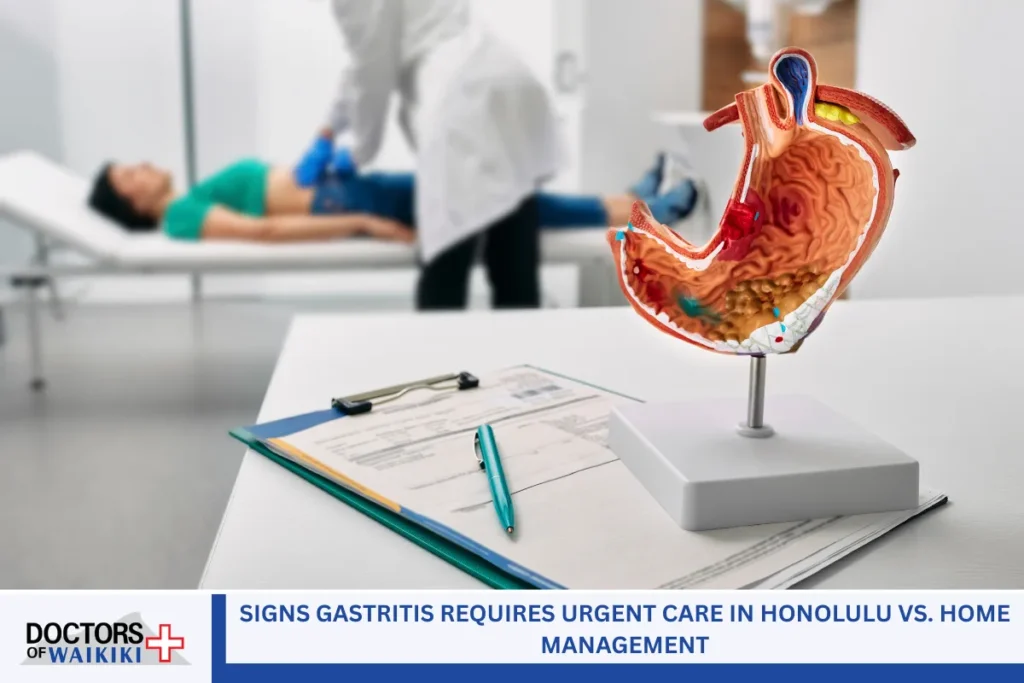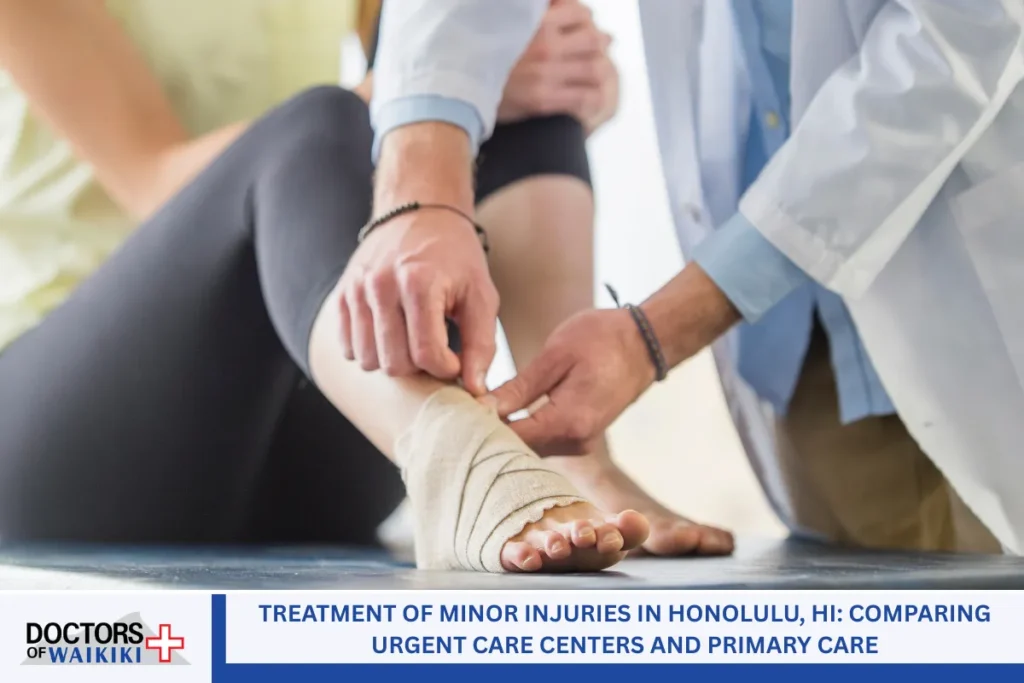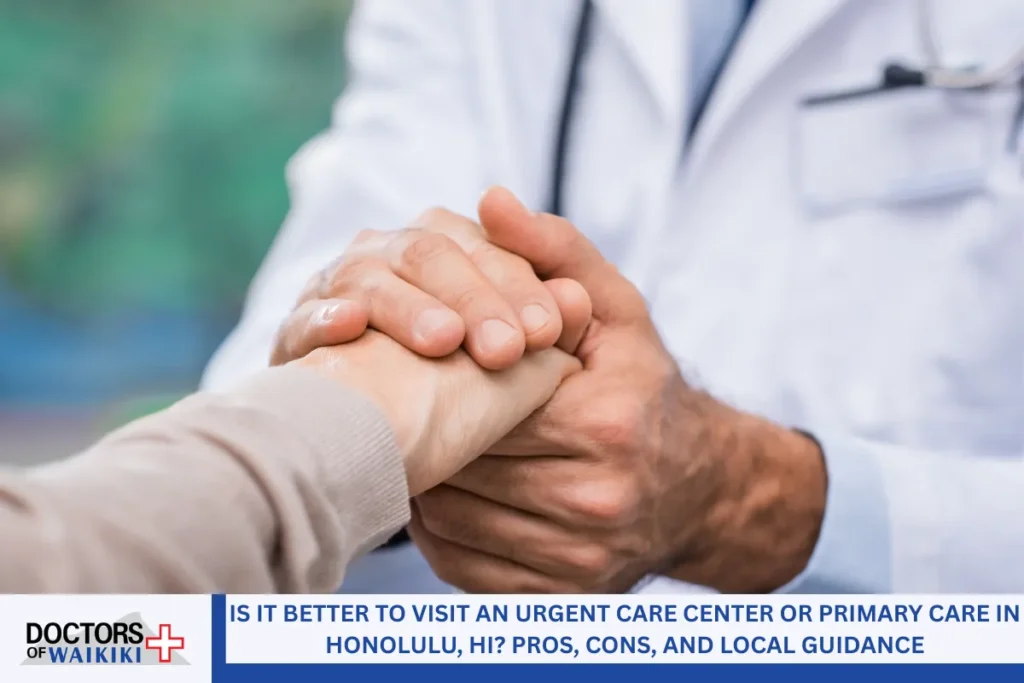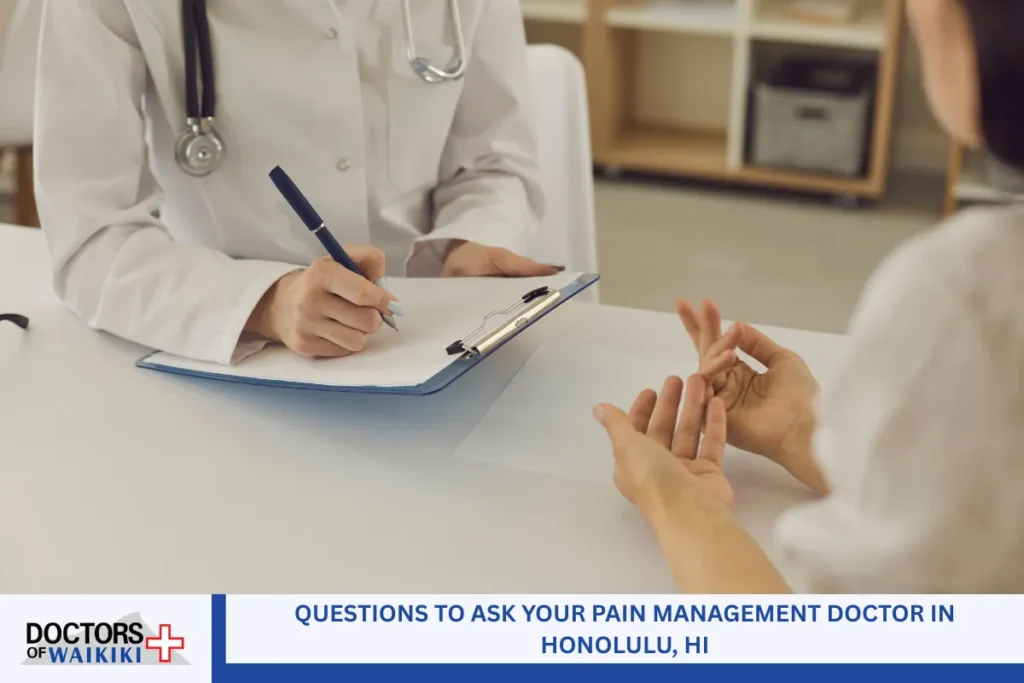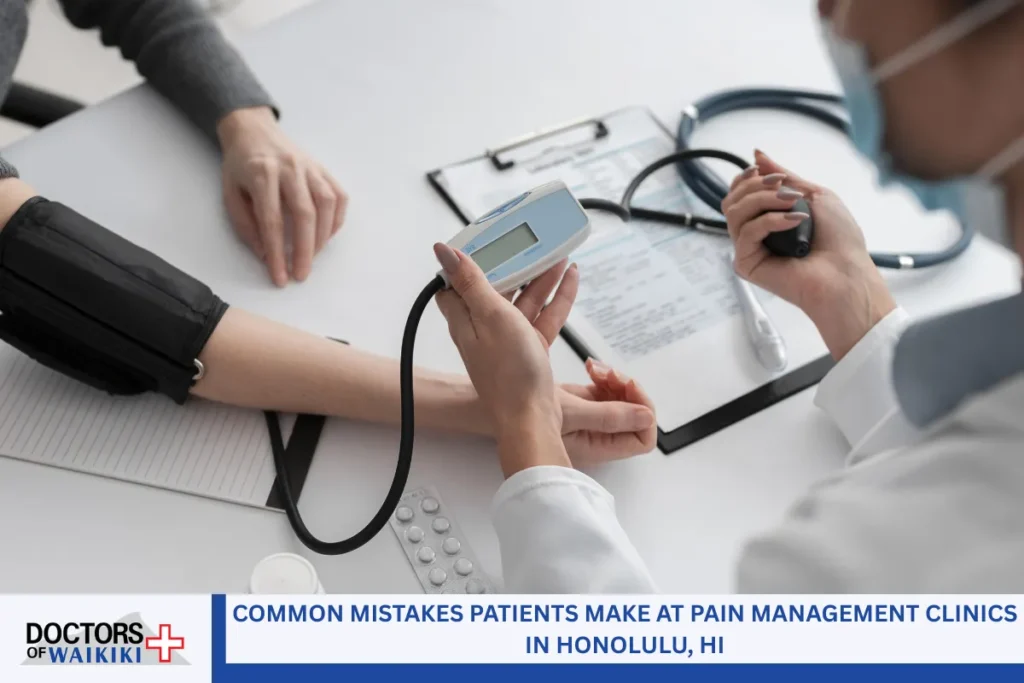When you’re sick, you want fast relief—and sometimes that means more than just taking pills. Certain infections call for stronger, faster intervention in the form of IV antibiotics. While many assume this care can only happen in a hospital, that’s no longer true. In Honolulu, many modern urgent care centers now provide IV antibiotic treatment, allowing you to access high-quality care without the ER wait or hospital admission.
Whether you’re dealing with a painful skin infection, a complicated UTI, or symptoms that are getting worse despite oral meds, understanding your treatment options is key. This article explores the top conditions that typically require IV antibiotics, how urgent care services in Honolulu administer them, and what you can expect during your visit.
What Are IV Antibiotics and Why Are They Used?

Intravenous (IV) antibiotics are medications delivered directly into your bloodstream through a small needle inserted into a vein. This delivery method allows the medication to work faster and more efficiently than oral antibiotics. It bypasses the digestive system, ensuring a higher concentration of the drug reaches the site of infection.
So, when are IV antibiotics necessary? They’re typically used when:
- Infection is severe or widespread
- Oral antibiotics have failed
- You cannot take pills due to vomiting or inability to swallow
- The infection is in a part of the body that requires fast action
- You have a weakened immune system or chronic conditions that complicate recovery
The decision to use IV antibiotics is based on the type of bacteria, your medical concern, and how your body responds to other treatment options. Urgent care physicians are trained to assess these factors and decide the best course of action.
How Urgent Care Centers in Honolulu Administer IV Antibiotic Treatment
In Honolulu, urgent care facilities have evolved to include more advanced capabilities, including IV therapy. This means patients who once had no choice but to visit a hospital can now receive the same level of antibiotic care at a nearby urgent care center.
The process typically includes:
- Initial Evaluation – You’ll meet with a healthcare provider who will take your vitals, review your symptoms, and ask about your medical history.
- Testing – They may order diagnostic tests such as a blood test, urine test, or culture to identify the infection.
- Decision and Setup – Once an infection is confirmed and IV treatment is approved, the provider will insert a small catheter into your vein.
- Monitoring – You’ll be monitored for allergic reactions or side effects during the infusion. Treatment time can range from 30 minutes to an hour.
- Discharge and Follow-Up – You may be given aftercare instructions or asked to return for additional doses or to transition to oral medication.
This convenient care model means you can walk in, get diagnosed, receive timely treatment, and be on your way—all in one visit.
Top Conditions That Often Require IV Antibiotics

IV antibiotics are reserved for more serious infections where oral meds are too slow or ineffective. Below are some of the most common conditions seen in Honolulu that are successfully treated with IV therapy at urgent care clinics:
1. Cellulitis and Skin Infections
This common bacterial skin infection causes redness, swelling, and pain, often in the legs or arms. If left untreated, it can spread quickly to the bloodstream. IV antibiotics are essential to stopping the infection fast and preventing complications.
2. Complicated UTIs
A typical urinary tract infection can often be managed with oral medication. But if symptoms escalate—such as back pain, fever, chills, or nausea—it may indicate the infection has reached your kidneys. These cases require urgent IV therapy to prevent long-term kidney damage or systemic infection.
3. Lower Respiratory Infections
Bacteria can cause conditions like pneumonia or bronchitis. When oral antibiotics don’t work, or symptoms like high fever, coughing, and shortness of breath worsen, IV antibiotics can help resolve the infection and prevent it from becoming life-threatening.
4. Ear and Eye Infections
Infections in sensitive areas such as the ears or eyes—especially those that cause swelling, fluid discharge, or vision/hearing changes—are treated more aggressively with IV medications to protect vital functions.
5. Wound or Surgical Site Infections
Infections in surgical incisions or deep wounds may start with minor signs but quickly progress. IV antibiotics help clear out deep-seated infections more effectively than oral options.
These are just examples of care that can be administered in a well-equipped urgent care location, offering advanced care without hospitalization.
Infections That Respond Better to IV vs Oral Antibiotics
Not all antibiotics are created equal. The same goes for how they’re delivered. IV antibiotics are often preferred when:
- The infection is resistant to standard medications
- Faster action is needed due to severe pain, swelling, or risk of sepsis
- The patient has compromised digestion, and oral meds may not be absorbed properly
- Multiple doses or a continuous treatment protocol is required
IV antibiotics are often used for:
- Deep tissue infections
- Bone infections (osteomyelitis)
- Blood infections (bacteremia)
- Lung infections that affect breathing
- Infections in patients with chronic diseases such as diabetes or cancer
IV treatment can mean the difference between rapid recovery and a long hospital stay. It’s a safe, targeted, and effective approach used frequently at urgent care services in Honolulu.
Benefits of Getting IV Antibiotics at a Honolulu Urgent Care Center

Opting for IV treatment at an urgent care center instead of the hospital has several distinct advantages, particularly in a location like Honolulu, where access and convenience matter to residents and travelers.
Key benefits include:
- No long wait times — walk in and receive care within an hour
- Lower cost — less expensive than ER visits or hospital admission
- Faster recovery — early treatment prevents escalation
- On-site expertise — board-certified urgent care physicians oversee your care
- Accessible to all — great for tourists who can’t reach their primary care doctor
This accessible treatment option ensures that anyone needing IV antibiotics—whether for minor infections or more serious bacterial conditions—can get help quickly without the red tape of hospital intake.
What to Expect During Your IV Antibiotic Visit
If you’ve never had IV treatment, you might wonder what it involves. Fortunately, it’s a simple and comfortable process in a professional urgent care setting.
Here’s what your visit might look like:
- You check in at the front desk and briefly describe your symptoms.
- A nurse or provider takes your vitals and reviews your medical concerns.
- You may be recommended IV antibiotics based on your symptoms and test results.
- A small needle is inserted into a vein—typically in your arm—for the infusion.
- You sit comfortably while the medication is administered, usually within 30–60 minutes.
- The team monitors you for any side effects or allergic reactions.
- You’re given discharge instructions, including whether to return for follow-up doses.
No hospital gown, no overnight stay—just efficient, comprehensive care that gets you back on your feet faster.
When to Consider the ER Instead of Urgent Care
While urgent care doctors are trained to manage a variety of conditions, some infections and symptoms require the higher-level resources of a hospital’s emergency department.
Head to the ER if you have:
- Extremely high fever with confusion or dizziness
- Difficulty breathing or chest pain
- Rapid heartbeat or low blood pressure
- Severe allergic reaction to medications
- Suspected sepsis (infection in the blood)
- Very young or elderly patients with sudden changes in behavior
These are signs of complex emergency care needs, and delaying treatment could lead to serious consequences. Always trust your instincts—and if you’re unsure, call your nearest provider for guidance.
How to Prepare for IV Antibiotic Treatment at an Urgent Care Center

Preparing for your visit ensures everything goes smoothly, especially if you’ve never received IV therapy.
Before you go:
- Bring your ID and insurance card (if applicable)
- Know your medical history and medication allergies
- Stay hydrated unless advised otherwise
- Wear short sleeves or something with easy access to your arm
- Bring a book, headphones, or something to pass the time during your infusion
Ask the clinic if any specific preparation is needed, especially if you have chronic conditions or are taking multiple medications.
Why Early Treatment Makes a Difference
Catching an infection early can change the entire outcome. A mild case of cellulitis today could become a serious emergency tomorrow. IV antibiotics stop that progression by delivering high-potency medication directly into the bloodstream—exactly where it’s needed.
The sooner you start treatment, the less likely you are to experience complications, scarring, or a prolonged illness. If you feel something’s wrong and you’ve tried home remedies or counter medications without improvement, trust the experienced team at your local urgent care center to step in before it’s too late.
Honolulu Urgent Care Center – Doctors of Waikiki

Looking for fast, reliable, and professional medical care in Honolulu? Doctors of Waikiki is here! Our modern urgent care center offers same-day treatment for everything from minor infections to IV antibiotic therapy—no appointment is needed.
Located in Waikiki, we’re just minutes from the beach, hotels, and city attractions, making high-quality care convenient and stress-free. We’re open 7 days a week—including holidays because we know illnesses and injuries don’t take days off. We also provide immigration medical exams, health screenings, and green card medical evaluations for those navigating the USCIS process.
Call us anytime at (808) 922-2112—your health can’t wait, and neither should you!
FAQs About IV Antibiotic Therapy at Urgent Care Centers
What is the difference between oral therapy and intravenous antibiotic therapy?
Oral therapy involves taking antibiotics by mouth, which must be absorbed through the digestive tract before entering the bloodstream. It’s effective for many common infections and is often used for outpatient care. However, more serious cases may require intravenous therapy (IV antibiotics). This method delivers the medication directly into a vein, allowing faster absorption and higher concentrations in the blood. IV therapy is especially important for treating skin structure infections, soft tissue infections, or infections resistant to oral antibiotics.
The choice between the two depends on the symptoms of the infection, the infection’s location, your overall health, and how your body has responded to previous treatments. Urgent care physicians consider your patient’s outcome, treatment history, and any existing days of therapy before recommending IV over oral medication. Honolulu urgent care centers are equipped to assess these cases and offer IV treatment when it’s the safer and more effective option.
Can I get IV antibiotic therapy in an urgent care setting, or do I need to go to the emergency department?
You can receive intravenous antibiotic therapy at many modern urgent care centers, including Honolulu. These clinics now offer a wide range of services for patients who need more than oral medications but don’t require full emergency department support. Many infections, such as soft tissue or more advanced skin structure infections, can be successfully treated in an outpatient setting without hospitalization.
Urgent care providers are trained to identify when a condition requires IV therapy. They can administer it on-site, often with shorter wait times and lower costs than a hospital visit. However, an emergency department may still be the better option if your infection is severe, spreading rapidly, or accompanied by life-threatening symptoms. The key difference is the level of care required. Urgent care physicians are ideal for handling stable cases requiring extraordinary care but not full hospital admission.
What kinds of infections are best treated with IV antibiotics?
IV antibiotics are typically used to treat infections that are either too severe for oral medications or have not responded well to earlier days of treatment. These include:
- Cellulitis and other soft tissue infections
- Complicated skin structure infections
- Pneumonia requiring fast action
- Kidney or urinary tract infections that have spread
- Deep ear infections or those involving surrounding tissue
These infections often require faster drug delivery and higher blood concentrations than what oral therapy can provide. Urgent care centers work with a trained clinical care team to monitor your progress and ensure effective treatment. In many cases, IV therapy allows for earlier discharge from higher-level facilities and helps avoid hospitalization entirely. Clinics also keep progress notes for follow-up care, ensuring continuity with your primary care provider or specialists. IV treatment can significantly improve patient outcomes when started early.
Who monitors my care during and after IV antibiotic treatment at an urgent care center?
Your care is managed by a licensed urgent care provider and a clinical care team, including nurses, technicians, and sometimes infectious disease consultants. At urgent care clinics, IV antibiotic therapy is provided under close supervision to ensure you receive safe and extraordinary care. During the infusion, the team monitors you for side effects like allergic reactions or medication intolerance.
After your session, the provider will document progress notes and may coordinate with your primary care provider for ongoing patient care. If your condition requires several days of therapy, the urgent care center will schedule return visits or refer you to a specialized infusion service like Option Care Health if necessary. This helps maintain care continuity in both acute and outpatient settings, especially for patients with chronic infections, homeless care needs, or other unique circumstances that make hospital admission less practical.
Read: When to Visit an Urgent Care Center for Antibiotic Treatment

